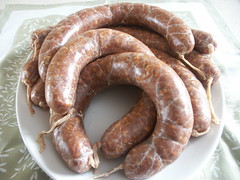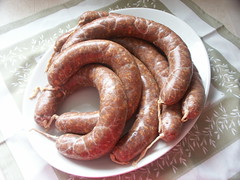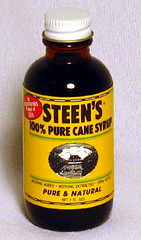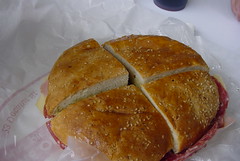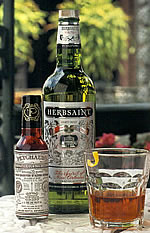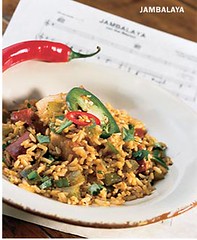Chicken & Andouille Gumbo Recipe
Chicken and Andouille Gumbo
1/2 Cup Vegetable Oil
3/4 Cup A.P. Flour
4 Tbsp Creole Seasoning
1 Cup Onions, Diced
1/2 Cup Green Bell Pepper, Diced
1/2 Cup Celery, Diced
1 1/2 Cups Andouille, Cubed
1 Cup Fresh Okra, Cut into 1/2 inch rounds
3 Tbsp Garlic, Chopped
6 Cups cold Chicken Stock
3 Fresh Bay Leaves
1 1/2 Cups Bite size pieces of Raw Chicken Thigh*
2 Tbsp Worcestershire Sauce
Hot Sauce to taste
Kosher Salt to taste, if necessary
2 Tablespoons Italian Parsley, finely Chopped
1/4 Cup Thinly Sliced Green Onions
Mix your onion, celery, and bell pepper together: The Holy Trinity
Heat the oil in a cast iron dutch oven over medium heat. Whisk in the flour to make a milk chocolate Roux (making a Roux). Add the Andouille, 1 Tbsp of Seasoning, and 3/4 of the Holy Trinity, cook, stirring often, for about ten minutes or until the vegetables soften. Add the Okra, cook for about 2 minutes. Add the cold stock, remaining seasoning, and Garlic. Bring to a Boil. Bring this down to a simmer and let it go for at least 2 hours, stirring occasionally. About 10-15 minutes before you're ready to serve, add the Chicken, Worcestershire, Hot Sauce, Parsley, and 1/2 of the Green Onions. When the chicken is cooked through, garnish with Green Onions and serve with Boiled Rice, Crusty French Bread, and a good cold beer (I like Dixie or Abita Amber).
* I prefer Chicken Thighs for my soups and Gumbos. It's the misunderstood portion of the bird, which is fine by me because it keeps the price down. I get them bone in, then Cartel wrap the bones and stick them in the freezer for stock. I'm like a Vulture when it comes to bones for stock, my freezer looks like the Catacombs (animals only of course).
This makes about 3-4 Main Course Servings


